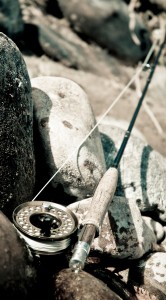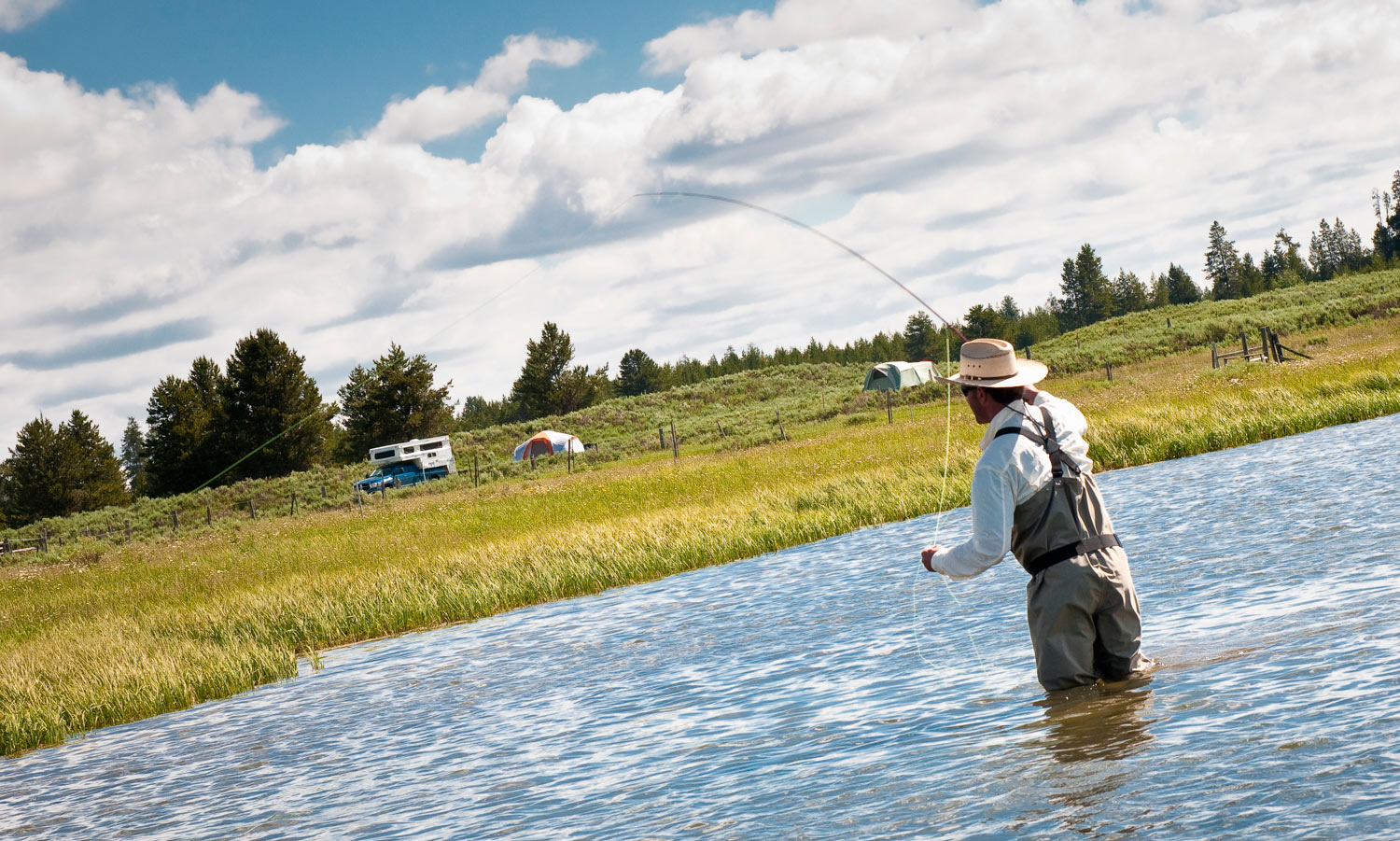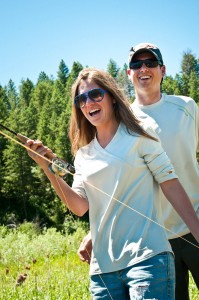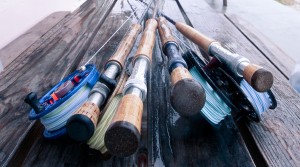By Justin Pickett
The first pieces of equipment we typically look for when getting into fly fishing are the rod and reel.
After all, without those two things, there isn’t a whole lot of fishing that’s gonna get done. So what do you buy? Why do you buy this vs. that? Where do you buy? Picking the right rod and reel setup can be a daunting task. There are numerous options, but we’ve got you covered with what we think are some of the best for beginners while also providing some leftover moolah for gas and flies.
Let’s start with where to buy. While I realize that it’s not always possible depending on where you live, I strongly suggest finding a reputable fly shop to help get you started. Let them know your budget and ask questions. Don’t just assume you know what they’re talking about, or that you’ll figure it out on your own. You have to have an open mind and be teachable. Doing this will help immensely with the learning curve. Don’t have a fly shop nearby? Use the internet to search for reviews on equipment, or ask other anglers in the parking lot. Orvis has a great program oriented to the new beginner. They offer tons of Fly Fishing 101 classes across the country and there’s a ton of info available on their website. And that’s just one resource! There are tons!
Alright let’s get to the meat and potatoes. The FLY ROD.
The fly rod is your magic wand. Without it, you would be an awful magician. There are tons of fly rods out on the market. Some big, some small. Some are affordable, while others might require a bit more explaining once the wife found that charge on the account. The most important thing about your first fly rod, and this is just my opinion, is that it needs to be affordable and appropriate for the fishing that you plan on doing. Forget the fancy talk about tapers and technique-specific rods. You just need a dependable rod that can multi-task and get you out on the water. The fancy stuff can wait, I promise. The next important thing is to match your new fly rod with the type of fishing you are doing. For beginners, I recommend the tried and true 9ft 5wt for freshwater fishermen, and for those with saltwater in their veins, a 9ft 8wt rod.
 Below is a list of rods that are great in my opinion, regardless of the model, and I can honestly say that I’ve cast and fished with all of them in various lengths and weights. All of these rods are great and have been established in the fly fishing market for quite some time now, providing tons of reviews for you to peruse through to help with the decision.
Below is a list of rods that are great in my opinion, regardless of the model, and I can honestly say that I’ve cast and fished with all of them in various lengths and weights. All of these rods are great and have been established in the fly fishing market for quite some time now, providing tons of reviews for you to peruse through to help with the decision.
So you’ve picked out a rod and now you need to outfit it with a reel.
Here we go again… how do you choose? Well lucky for you, we live in a day and age where while not all reels are created equal, there aren’t too many out that that I would consider “duds”. Most components are going to be of good quality, but I would urge you to shy away from reels that are composed of plastics or “composite” materials. Their structural integrity can be much easier to become compromised than reels made of metals. The spool, especially, can become warped or fail under stress, leaving you with a whole lot of nothing to fight a fish. Stick to reels that are either cast aluminum, or are machined from bar stock. The quality will be much better, and they will last for years and years.
As far as the drag is concerned, I’m a big believer in having a good drag system and utilizing it on the water. Some folks will tell you that your rod is nothing more than a “glorified line holder”. Yeah, OK. Maybe if you’re bow-and-arrow casting at brook trout, but other than that I don’t believe that garbage. You’ll find reels with sealed drags and unsealed drags. Sealed drags are going to cost you more, but the tradeoff is less maintenance and they will be more saltwater friendly. You can certainly fish an unsealed drag system in saltwater, but you better wash it well with freshwater when the day is over. Corrosion is a drag system’s worst nightmare. I always suggest a reel with a sealed drag to those who primarily fish for saltwater species.
As far as size goes, just make sure that you have enough room for an appropriate amount of backing and your fly line. I suggest 100yds of 20lb backing for freshwater setups, and 200-250yds of 20-30lb backing for saltwater species. The large arbor reel has become the industry standard and aides in line pickup and your fly line will be a little more resistant to memory (coiling). The list of reels below is a solid group that will get you going out on the water. You just can’t go wrong with any of these, in my opinion.
Do you need options that are even more cost-effective?
Are you in the market for your kid’s first fly fishing outfit? Or maybe you’re the person that just loves the idea of one-stop shopping. I got you covered. There are options out there that allow you to literally walk into a store and walk out ready to fish. Or hell, even have it delivered to your home by Amazon Prime for crying out loud. Now, you won’t find a Thomas and Thomas paired with an Abel, but you will find good quality gear that is more than enough to keep you fishing. These kits even include backing, fly line, a leader and a handful of flies! One of my first fly rod setups was a Cabelas Canyon River setup that my parents bought out of one of their catalogues. Yeah, the actual catalogue where you mailed in the order form! I cut my teeth with that setup and took it everywhere I went. What’s even better is most kits have you covered whether you’re fishing for trout, bass, or saltwater. So if you’re looking for an all-in-one, ready-to-go solution to get you on the water and on the way to fly fishing nirvana, look no further than the list below.
Give these rods, reels, and combos a look. Do your research. Head to your local fly shop to get some insight and cast a couple rods in your price range. Check out reviews online. Figure out what will work best for you, or take my word for it. The main objective is to get you on the water and on the road to catching that first fish on fly tackle. Once that happens, it’s all good from there! I can’t be held responsible for addiction that will ensue, however! Hopefully I’ve been able to take at least a little bit of the guessing out of the mix and given you a good starting point. Now get out there!
Justin Pickett Gink & Gasoline www.ginkandgasoline.com hookups@ginkandgasoline.com Sign Up For Our Weekly Newsletter!




LLBean has entry level gear that is good quality, free shipping and no questions return policy.
I would suggest that your gear becomes an evolution, get a great entry level setup as recommended above. Then as your experience increases and you start to hone in on your niche (small streams, swinging, salt) it’s time to upgrade. Another great resource for gear is a guide. Most times he or she can study your casting style and suggest a setup to suit it.
Keep up the good work!
Okuma SLV 5/6
Pingback: Tippets: Art of Alberto Rey, Florida Skiff Challenge, Beginning Rods & Reels | MidCurrent
I suggest an Echo Gecko for the youngster.